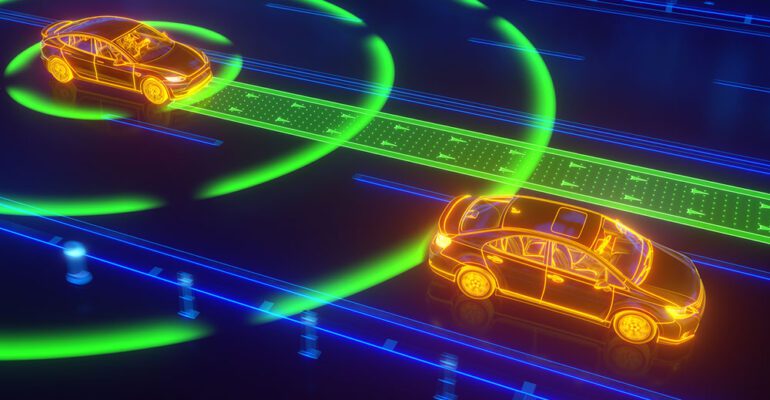TL;DR:
- Image anonymization is crucial for protecting privacy in computer vision, particularly in the context of autonomous vehicles.
- Anonymization poses challenges, including data degradation, privacy-utility balance, algorithm efficiency, and moral-legal concerns.
- Traditional methods like blurring and masking, along with generative models, have been used for anonymization, but formal guarantees of anonymity are often lacking.
- Limited studies have explored the impact of anonymization on computer vision models, with varying effects based on the task.
- Researchers evaluated full-body and face anonymization techniques using DeepPrivacy2 and found that face anonymization had minimal impact on instance segmentation, during full-body anonymization significantly impaired performance.
- Realistic anonymization showed promise but still resulted in degraded results due to errors and synthesis limitations.
- Larger models performed worse for face anonymization, but both standard and multi-modal truncation methods improved full-body anonymization.
- Privacy protection without compromising model performance is crucial, and further research is needed to enhance anonymization techniques and address limitations.
Main AI News:
In the realm of computer vision, the protection of privacy plays a crucial role in the development and application of autonomous vehicle technologies. As the use of computer vision models becomes more pervasive, it becomes essential to address the challenges posed by the anonymization of data. Anonymization, the process of modifying or removing sensitive information from images, is a practice that safeguards privacy but often comes at the cost of data quality. The impact of anonymization on computer vision models, particularly those used in autonomous vehicle datasets, is a subject of great importance.
Various hurdles arise when anonymizing data for training computer vision models. One such challenge is data degradation, where the modification of images can lead to a loss of valuable information. Striking the right balance between privacy and utility becomes paramount. Efficient algorithms must be developed to ensure that the anonymization process is both effective and reliable. Additionally, the moral and legal implications surrounding anonymization techniques necessitate careful consideration.
Traditionally, image anonymization has relied on methods like blurring, masking, encryption, and clustering. While these approaches have been employed successfully, recent research has focused on more realistic anonymization methods that leverage generative models to replace identities. However, many of these methods lack formal guarantees of anonymity, leaving room for potential privacy breaches. Furthermore, even in cases where anonymity is maintained, other cues within the image can inadvertently reveal identity. Therefore, the impact of anonymization on computer vision models must be thoroughly studied.
Unfortunately, the availability of public anonymized datasets for computer vision research remains limited. Consequently, researchers from the Norwegian University of Science and Technology have undertaken a study to investigate the effects of anonymization on crucial computer vision tasks within the context of autonomous vehicles. Specifically, their attention has been directed toward instance segmentation and human pose estimation.
The study evaluates the performance of full-body and faces anonymization models implemented in DeepPrivacy2, a framework designed for realistic anonymization. To compare the effectiveness of these realistic anonymization approaches with conventional methods, the researchers propose three techniques: blurring, mask-out, and realistic anonymization. The anonymization region is defined based on instance segmentation annotations, providing a targeted approach to protecting privacy. Additionally, the authors address global context issues in full-body synthesis through histogram equalization and latent optimization.
The experiments conducted by the authors involve training models on anonymized data sourced from three datasets: COCO Pose Estimation, Cityscapes Instance Segmentation, and BDD100K Instance Segmentation. The findings reveal that face anonymization techniques exhibited negligible performance differences on the Cityscapes and BDD100K datasets. However, for COCO pose estimation, both mask-out and blurring techniques resulted in a significant decline in performance. This can be attributed to the correlation between blurring/masking artifacts and the human body, which negatively impacted keypoint detection.
Moreover, the study indicates that full-body anonymization, whether implemented through traditional or realistic methods, led to a decline in performance when compared to the original datasets. Although realistic anonymization outperformed traditional techniques, it still resulted in degraded results due to keypoint detection errors, synthesis limitations, and a mismatch in the global context. Interestingly, the study also explores the impact of model size and reveals that larger models performed worse for face anonymization on the COCO dataset. Conversely, for full-body anonymization, both standard and multi-modal truncation methods demonstrated improved performance.
Conclusion:
This study highlights the importance of effectively anonymizing data in computer vision models for autonomous vehicles while considering the trade-off between privacy and model performance. Face anonymization techniques showed minimal impact, but full-body anonymization significantly hindered performance. Realistic anonymization offers potential, but keypoint detection errors and synthesis limitations remain challenges. The market needs to focus on developing improved anonymization techniques to ensure privacy protection without sacrificing the quality and performance of computer vision models in the autonomous vehicle industry.

